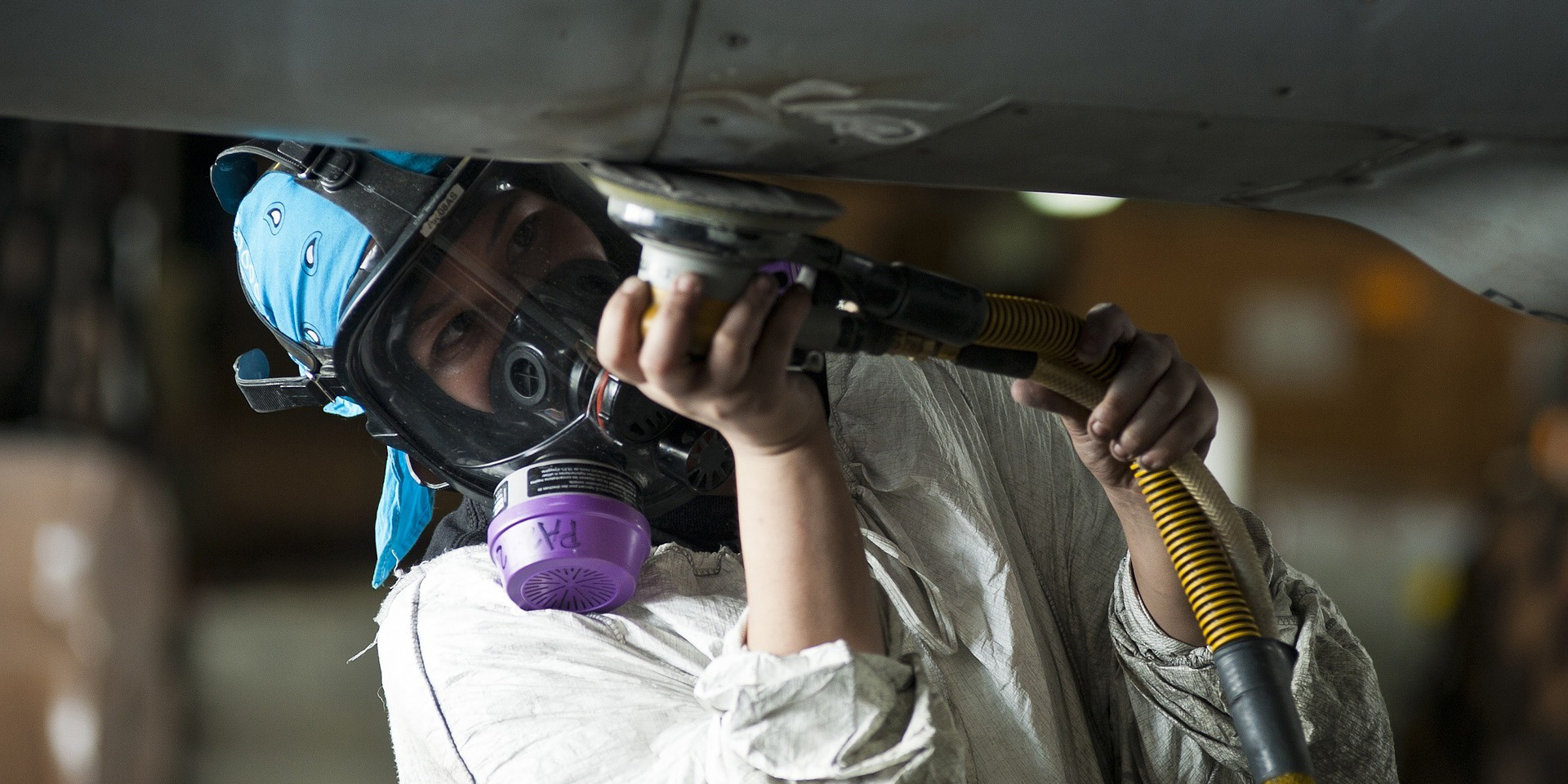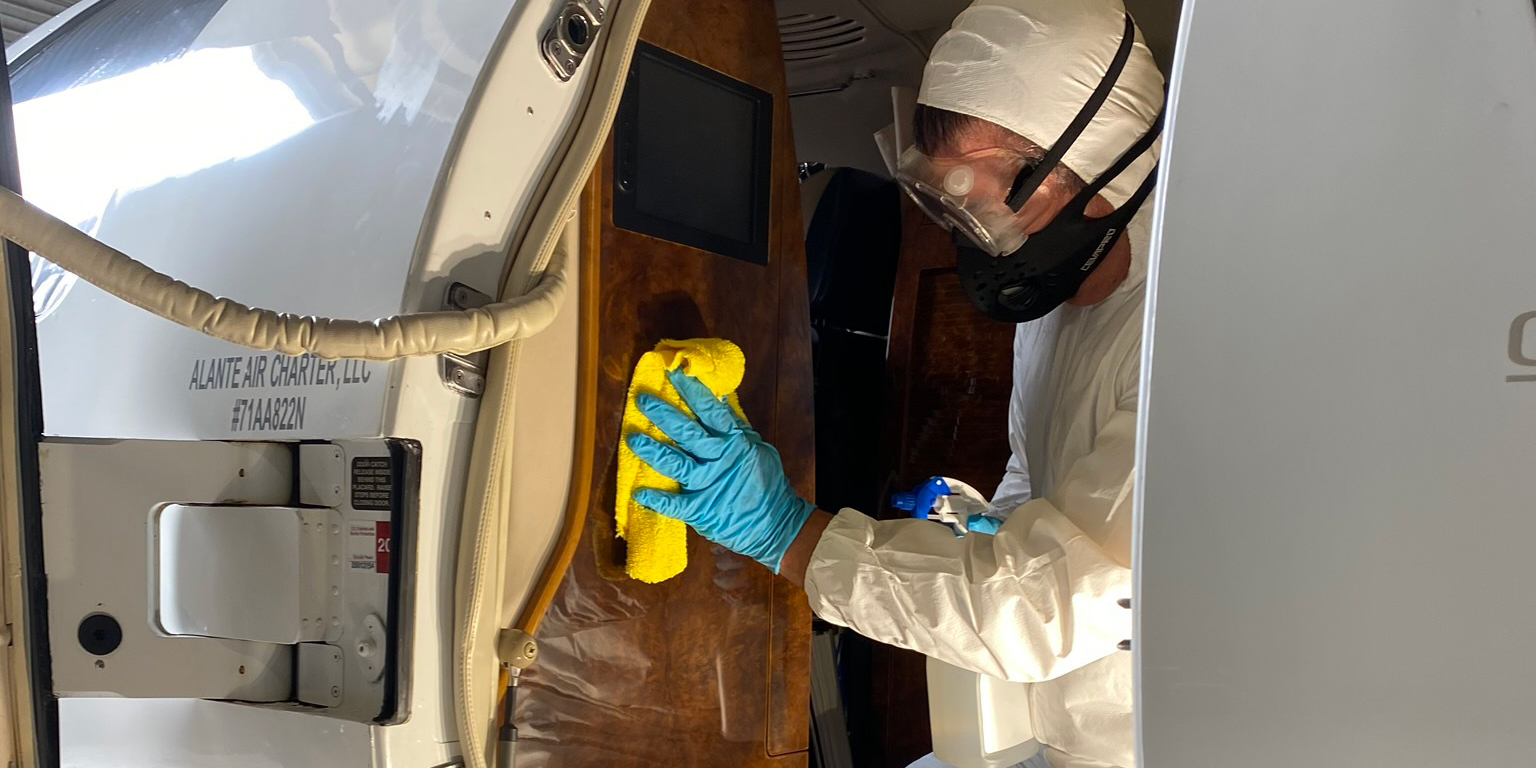Click Here to View This Page on Production Frontend
Click Here to Export Node Content
Click Here to View Printer-Friendly Version (Raw Backend)
Note: front-end display has links to styled print versions.
Content Node ID: 401497
The aviation world has changed considerably as a result of the Covid-19 pandemic, forcing business aircraft operators and flight departments to question common practices and what were, until just a few months ago, considered certainties in the industry.
Decreasing passenger loads and varying regulatory demands have contributed to a worldwide decline in flights in all aviation sectors, but for those business aviation operators still flying or about to resume operations, “there is no such thing as a routine trip anymore,” said Adam Hartley, manager of global regulatory services with Universal Weather and Aviation. “If you are an operation that would normally require a permit, those requirements have certainly changed, with a lot more information requested about travel history and health declarations, and I don’t think those things are going to be going away anytime soon.”
New Questions
Hartley suggests that flight department operators begin capturing 14-day crew and passenger history for everyone expected to participate in a flight. “That’s not something that has been a common- or even uncommon-type request or practice, but certainly something that is a best practice now, so it’s not just where did everybody travel on the airplane, but even in their personal travels.”
That extends to charter flights as well, according to Daniel Govatos, director of operations for charter provider Keystone Aviation. “We ordinarily would not be asking people details about their past travel and details about their health," he said. "But bringing to their attention that we sincerely want to protect both them and our crews, it has gone over very well. I believe that people are understanding a lot more, that they will need to be as honest with us as possible.”
Flight operations have begun instituting other safety measures. Some require temperature screenings before passengers and crew are allowed to board the aircraft, although questions such as what temperature threshold should be used to disqualify people remain, like most recent sanitary advice, up to individual company discretion. Given the fact that some infected people can remain fever-free or have just a low-grade increase in temperature, that screening is far from a foolproof indicator.
“These are unsettling times, and with that comes new procedures for both crew and passengers,” said Kimberly Mazzeo, chief flight attendant for an international flight department. “Some of these may seem somewhat of an invasion of privacy to our passengers, and we need to be sensitive to that.” She recommends taking temperatures in a more secluded location and other current practices such as mandating the crew to wear masks and gloves and reducing their interaction in the cabin. It is also a good idea to equip each aircraft with a sanitization kit, provide personal protective equipment to passengers and instruct them on its use as well as proper disposal, limit the seating capacity on the aircraft to provide some personal separation, and pair crew members and maintenance teams to minimize contact and possible transmission as well as simplify contact tracking in case of infection.
According to a recent U.S. Department of Transportation (USDOT) Safety Alert for Operators (SAFO) 20009, after each cockpit crew change, it is recommended to clean and disinfect surfaces in the flight deck that are frequently touched and utilized by cockpit crew members, such as yoke, throttles, autopilots, and radios, and to use products that are effective against Covid-19, compatible with aircraft, and approved by the aircraft manufacturer for use onboard the aircraft.
Last month NetJets announced it would provide antibody testing to all of its employees, dispatching a quartet of its Global 6000s to Shanghai to pick up a half a million Covid-19 antibody tests approved for use by the U.S. Food and Drug Administration. “We are committed to testing 100 percent of our crewmembers initially and offering ongoing testing to anyone who travels to high-risk locations, has been exposed to Covid-19, or becomes symptomatic,” said Patrick Gallagher, the operator’s president of sales, marketing, and service.
As well there has been a proliferation of companies offering aircraft and facility disinfection services using a variety of methods.
A New World
As operators slowly resume international flights, new potential problems need to be considered, according to Charlie LeBlanc, v-p of United Healthcare Global’s medical assistance and security division, and a member of NBAA’s security council. Speaking during a recent NBAA webinar on aviation security issues in the Covid-19 era, he noted that countries have developed varying responses to the pandemic. “One of the biggest concerns that I see as we open up the world again and start traveling globally is countries now have figured out that flipping a switch and closing their borders is a relatively simple act.”
He pointed to several recent examples during the crisis, where countries ordered their borders and airspace sealed after outbreaks, in some cases giving as little as six hours notice. He added that understanding that past behavior is now an important factor in mission planning. “If a country has shown that they close their airspace down with very little notice, it becomes even more imperative that crews and passengers are at the ready to leave in a very quick amount of time,” he said.
Going forward, international flight crews might encounter a “clean corridor” system comprising a clean crew, clean aircraft, and clean airports and hotels,” Dr. Paulo Avles, MedAire’s global director of aviation health told AIN. “China, for example, is already publishing guidelines on that regard creating procedures to be followed for crews arriving in that country. They are designating specific hotels around the airports to be utilized by crews in layover and requiring the need for testing for virus for those subsequently connecting domestically.” He is hopeful that a vaccine will be developed along with the establishment of a ‘health passport’ to allow for the free movement of passengers and crews.
Even for domestic flights, things can change rapidly from state to state, according to Universal’s Hartley, and accurate, timely information from the destination is key from the flight planning perspective. “Start the process earlier, forget what you knew for sure about locations, and take them on a case-by-case way right now until we can start to build back to a level of consistency,” he said. He advises operators to get that vital information, including any current local health regulations, from someone with a “boots-on-the-ground” view such as the destination FBO. He warned that familiar hotels, rental cars, or restaurants could be in short supply. “The availability of those things is something that shouldn’t be counted on today or thinking that all those services are going to be open and available without extra confirmation ahead of time."
During this period, to avoid being caught in local restrictions, Universal advises that crews leave the destination airport only if necessary, and many companies are advising their crews to pack food from home. Indeed, to protect their health, the U.S. DoT SAFO 20009 advises air carrier crews to stay at home or in their hotel rooms (as applicable) to the extent possible, eat in their hotel room during layovers with either room service or delivery service, or if in-room food delivery options are not available, get take-out from hotel restaurant or another restaurant nearby. Several industry caterers are now offering to deliver meals to destination airports for crews to take to their hotels for consumption.
For flights requiring catering, ordering from a local restaurant may now be questionable, as they might not operate to the same standards of hygiene practiced by dedicated in-flight kitchens, which have further stepped up their sanitary regimens from what were already stringent standards.
In an effort to avoid the need for overnights, some flight departments have changed their schedules, requesting their employees depart earlier in the day to accomplish their missions so the aircraft can return to home base. Failing that, they will relocate the aircraft and crew to areas of less infection.
On the Ground
NATA issued a document containing guidance for FBOs and ground handlers in late March including advice that disinfectant/antiseptic solutions should be applied hourly to high-risk, high-traffic areas and items. “FBOs are a funnel point between the outside world and the flight line,” said LeBlanc, noting some flight departments have begun to inquire what sanitary measures service providers are undertaking, before engaging their services. Other measures imposed at some locations include segregating customers by flight within the terminal and even requesting customers to stagger departure times to minimize contact between waiting groups.
As for ordering ground transportation, “ask them a simple question, what are your cleaning guidelines for your vehicles?” said LeBlanc. “If there is a lot of pausing and hesitation, that probably means they’re not doing much and probably making it up as they as they go along,” he told the webinar audience. “We’ve talked a lot about protecting our passengers and crews [but] all that goes out the window if we put them in a vehicle that has not been properly cleaned, at least to the best of expectations. Some companies such as Keystone Aviation have attempted to avoid chauffeur-driven or rideshare situations entirely, according to Govatos, who said his company has been relying more on rental cars, even for passengers.
Greg Kulis, a member of NBAA’s security council as well as a lead captain and security coordinator for an international flight department, said that when weighing the level of safety precautions companies are taking during this time, versus the possible inconvenience and alarm to customers and passengers who many already be anxious, "We’re here to provide the safest, most effective transportation in the world, so given that mission statement, I would much rather explain why we are taking a certain precaution, than why we are not taking a certain precaution. I think most times that will answer the question.”
Less Staff, Increased Vigilance
With many flight operations furloughing staff and otherwise reducing on-site presence due to work-at-home protocols, “It’s apparent that we need to evaluate our safety and security protocols to ensure the current circumstances are considered,” Kulis said during the webinar, noting that companies must reevaluate their access procedures. “It’s essential for every aircraft operator to know who is in the facility and when they are there.”
“We’re operating with reduced staffing, reduced activity, and therefore being vigilant about our surroundings, our facilities, our airport areas. You just don’t have as many eyes on what’s normal,” added Eric Moilanen, president of Premier Corporate Security and chair of NBAA’s security council during the webinar. He added that what would have been considered normal just a few months ago has been turned upside down. “If someone used to come to the front door with a hat, sunglasses, and a mask over their face, it was generally time to hit the panic button and call the police. Now we look at it as an everyday occurrence, and in fact, we are mandating it in some places.”
Another aspect of the mass layoffs the industry has endured is the potential threat arising from disgruntled employees. While companies may have human resource procedures in place for the termination of one or two employees, many are experiencing unprecedented workforce reductions during this time. Employers are not obligated to discuss why a worker has been dismissed or company financial status, but Moilanen advises more transparency at this time, particularly with people the company might bring back when conditions improve.